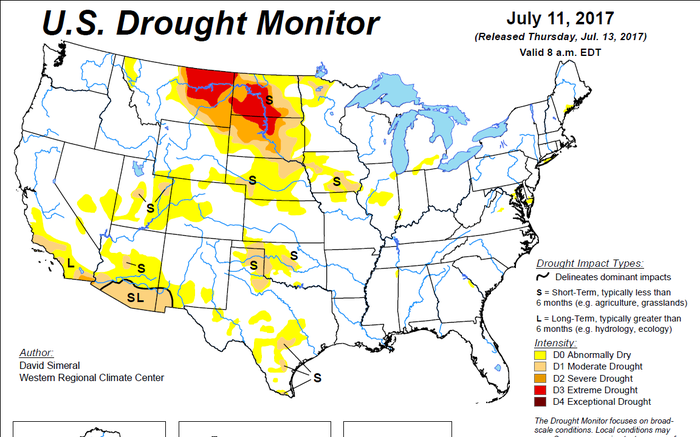
The northern Plains faced further deterioration of crop and pasture conditions, as only widely scattered showers accompanied periods of extreme heat. The week’s hottest weather, relative to normal, gripped the drought-stricken northern High Plains, where temperatures frequently topped 100°F and averaged as much as 10°F above normal. Hot weather (temperatures at least 5°F above normal) also extended southward through the nation’s mid-section and across most of the western U.S., although a few areas notably, the central Plains and the Four Corners States—received beneficial moisture in the form of locally heavy showers.
Early in the week, intense heat covered the north-central U.S. In Nebraska, record-setting highs for
July 9 soared to 109°F in Valentine and 107°F in Chadron.
Meanwhile in Montana, daily-record highs on July 9 included 99°F in Great Falls and 97°F in Lewistown. Following a brief break, heat returned toward week’s end across northern Plains, where Dickinson, North Dakota, posted a daily-record high of 104°F on July 14.
Farther east, a spell of record-setting heat in the Mid-Atlantic States resulted in a daily record-tying high
(98°F on July 12) in Richmond, Virginia.
For much of the week, the heaviest showers were concentrated in the Great Lakes States and across the South. In the Midwest, daily-record amounts for July 10 reached 2.15 inches in Peoria, Illinois, and 1.89 inches in Fort Wayne, Indiana.
Meanwhile in Illinois, the Des Plaines River crested on July 14-15 more than 5 feet above flood stage in Russell and Gurnee.
About the Author(s)
You May Also Like




